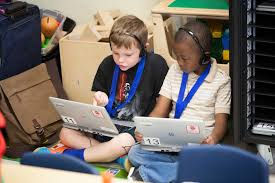The educational landscape continues evolving as innovative teachers discover powerful instructional allies in well-crafted kids animated shows. This partnership between educators and animation represents more than convenience or entertainment—it reflects a sophisticated understanding of how children process information and develop conceptual frameworks through narrative experiences. Research increasingly validates that carefully selected animated content can significantly enhance learning outcomes across multiple developmental domains.
Cognitive science explains why animation proves particularly effective for young learners. Children’s developing brains show heightened activation in both information processing and memory formation regions when engaging with narrative-based animated content compared to traditional instruction alone. The combination of visual stimulation, emotional engagement, and sequential storytelling creates optimal conditions for concept acquisition and retention, particularly for visual-spatial and sequential reasoning skills.
Educational psychology offers additional insights into this phenomenon. Theorists from Vygotsky to Gardner have emphasized that learning occurs most effectively when new information connects to existing knowledge frameworks in meaningful contexts. Well-designed animated shows provide precisely these contextual frameworks, allowing children to assimilate new concepts through familiar narrative structures and relatable character experiences.
Literacy development benefits substantially from quality animated programming. Shows with rich vocabulary, varied sentence structures, and narrative complexity expose children to language patterns that extend beyond their typical conversational experiences. Teachers report that classroom discussions about animated content frequently elicit more sophisticated language use than conversations about abstract concepts presented through traditional instructional methods.
Mathematical thinking finds natural expression through animation as well. Programs featuring problem-solving scenarios, spatial reasoning challenges, and pattern recognition activities help children visualize abstract concepts that might otherwise remain inaccessible. The narrative framing of these mathematical situations helps learners recognize real-world applications rather than perceiving math as isolated computational exercises.
Scientific inquiry skills develop effectively through animation-based approaches. Shows demonstrating the scientific method, experimental design, and cause-effect relationships model inquiry processes that children can subsequently apply to classroom investigations. The visual representation of otherwise invisible phenomena—from cellular processes to astronomical concepts—makes abstract scientific principles concrete and comprehensible.
Social-emotional learning represents another significant benefit of thoughtfully selected animated content. Characters navigating friendship challenges, managing emotions, and demonstrating empathy provide powerful models for interpersonal skill development. Teachers can reference these scenarios during classroom discussions of social dynamics, creating bridges between fictional examples and actual student experiences.
Cultural awareness expands through exposure to animated shows featuring diverse characters, settings, and traditions. This exposure helps students develop appreciation for differences while recognizing shared human experiences across various communities and backgrounds. Teachers can extend these learning opportunities through related activities that deepen understanding of cultural contexts beyond those presented in animated content.
Implementation approaches vary based on educational philosophy and classroom context. Some teachers use short animated segments as lesson introductions, while others incorporate full episodes as content reinforcement. The most effective strategies typically involve a combination of viewing, discussion, related activities, and real-world application opportunities that extend learning beyond passive consumption.
Assessment considerations influence how teachers evaluate learning from animated content. Rather than testing recall of show details, effective assessment focuses on concept application, critical analysis, and extension of presented information. Projects, discussions, and problem-solving activities provide more authentic measures of learning than traditional quizzes or worksheets.
Professional development increasingly addresses media integration competencies. Teacher preparation programs now frequently include coursework on evaluating educational media, designing complementary activities, and assessing learning outcomes. These training resources help educators move beyond intuitive approaches to more evidence-based integration strategies.
Parental partnerships strengthen when teachers communicate clearly about media-based learning approaches. By explaining the intentional, limited use of animated content within broader instructional strategies, educators address potential concerns while encouraging extension activities at home. This school-home connection creates consistency that reinforces learning objectives across different environments.
Resource allocation remains a consideration for effective implementation. Schools with limited technology access may struggle to incorporate digital content equitably, potentially contributing to educational opportunity gaps. Addressing these disparities requires systemic solutions, including funding priorities that ensure all students can benefit from high-quality educational media regardless of community resources.
Research validation continues accumulating for animation-based learning approaches. A meta-analysis conducted by the Educational Technology Research Development Journal examined 42 studies and found statistically significant advantages in concept retention, application abilities, and student engagement when curriculum-aligned animated content supplemented traditional instruction compared to conventional methods alone.

